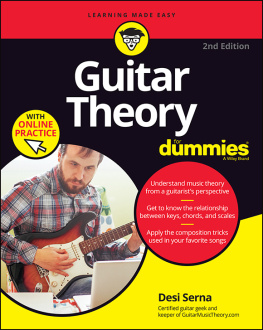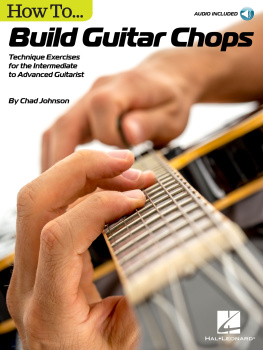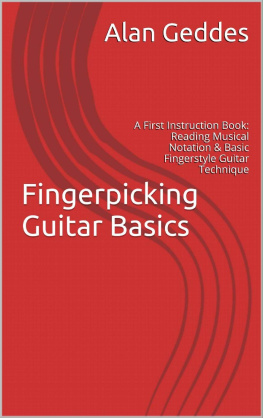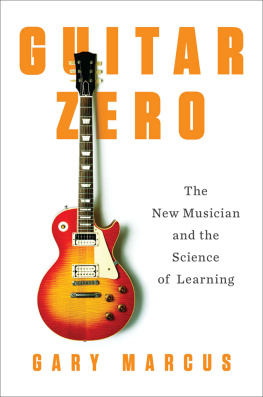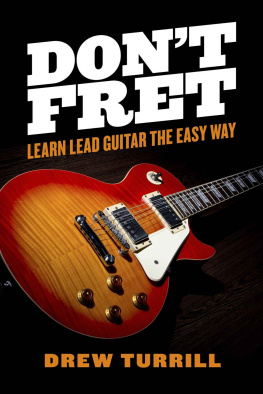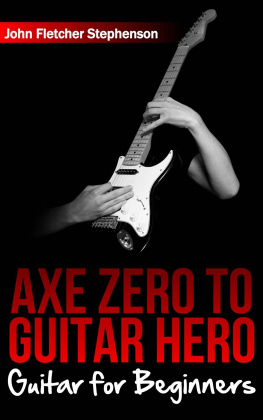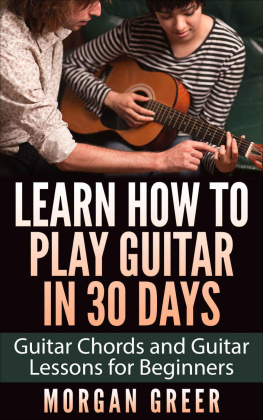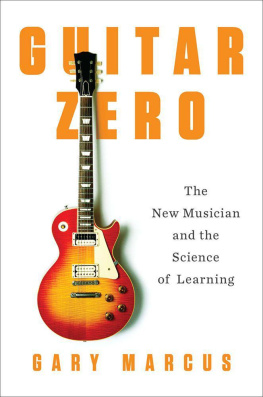Leitgeb - The Guitar Tome
Here you can read online Leitgeb - The Guitar Tome full text of the book (entire story) in english for free. Download pdf and epub, get meaning, cover and reviews about this ebook. year: 2015, publisher: LitFire Publishing, genre: Detective and thriller. Description of the work, (preface) as well as reviews are available. Best literature library LitArk.com created for fans of good reading and offers a wide selection of genres:
Romance novel
Science fiction
Adventure
Detective
Science
History
Home and family
Prose
Art
Politics
Computer
Non-fiction
Religion
Business
Children
Humor
Choose a favorite category and find really read worthwhile books. Enjoy immersion in the world of imagination, feel the emotions of the characters or learn something new for yourself, make an fascinating discovery.

- Book:The Guitar Tome
- Author:
- Publisher:LitFire Publishing
- Genre:
- Year:2015
- Rating:5 / 5
- Favourites:Add to favourites
- Your mark:
- 100
- 1
- 2
- 3
- 4
- 5
The Guitar Tome: summary, description and annotation
We offer to read an annotation, description, summary or preface (depends on what the author of the book "The Guitar Tome" wrote himself). If you haven't found the necessary information about the book — write in the comments, we will try to find it.
The Guitar Tome — read online for free the complete book (whole text) full work
Below is the text of the book, divided by pages. System saving the place of the last page read, allows you to conveniently read the book "The Guitar Tome" online for free, without having to search again every time where you left off. Put a bookmark, and you can go to the page where you finished reading at any time.
Font size:
Interval:
Bookmark:
Table of Contents The GUITAR TOME
WALTER LEITGEB
The Guitar Tome 2015 Walter Leitgeb All rights reserved. No part of this publication may be reproduced, distributed, or transmitted in any form or by any means, including photocopying, recording, or other electronic or mechanical methods, without the prior written permission of the publisher or author, except in the case of brief quotations embodied in critical reviews and certain other noncommercial uses permitted by copyright law.
ISBN 13: PDF: 978-1-942296-72-0 ePub: 978-1-942296-73-7 Kindle: 978-1-942296-74-4
Although every precaution has been taken to verify the accuracy of the information contained herein, the author and publisher assume no responsibility for any errors or omissions. No liability is assumed for damages that may result from the use of information contained within.
This is a book about how to play guitar, for beginner to advanced players, which focuses on what possible shapes there are to play, and how they fit in families. I know that there is more to music than what chord goes in what scale, but it is nonetheless applicable information. There are a limited amount of possible combinations of notes in 12 tone music.
There are quite a lot of ways to combine them if you do have chromatic parts in the shape. If we do not ever have 3 notes in a row, that is, 2 consecutive half steps, things get clearer. A framework emerges. If we say that as a general rule there is always a 5th, be it flat natural or sharp, and never 3 notes, 2 consecutive half steps in a row, there can be rendered a limited number of very useful shapes, that can be learned. In this book I have detailed every possible combination of notes using those rules, with a few exceptions that didn't seem to fit, or be necessary to document. One thing that will be apparent is that I featured fewer chords than I did arpeggios.
This is because some chords are physically difficult or impossible to fret. However, in the chords section, I have featured 100 chord types aside from triads. Some have fewer inversions than others, some have a couple, some have an inversion for every note, but in those 100 chord formulas there are many chords to play considering all of the inversions. I have listed chords by number of notes in the chord, and their formulas. I have also shown how they invert into one another, when they do. For example, you may know that a Min 7 inverts into a Maj 6 this principle applies to many chord types.
The Chord/Scale Tables show modes as I have named them with chords that go in each mode, again by number of notes in each chord. In this way a person can readily identify what chords may fit in what positions, and perhaps knowing inversions, can employ a lot of ideas on one spot or anywhere on the fretboard. There are also two types of arpeggios I have shown, caged arpeggios and diagonally ascending arpeggios. A disclaimer here: I know it would be more legit to show arpeggios whose formula is greater than an octave, with those notes shown above the octave. Instead I have consolidated all formulas into one octave at a time. For example an arpeggio with a formula containing a 9 will be shown as a 2 instead.
There's a ton of great riff material there. Some of the arpeggios are not as shreddable or sweepable as others, they are nonetheless each a unique sound or taste. So, I have shown one example of how to play a formula beyond one octave, the intervals stacked properly, but I leave it up to the reader to apply that technique to the arpeggios here, or ones they may think of themselves. There are other interesting sections, you can explore for yourself. This book began as a self study for my own learning, but I realized it could be of worth to others, so, I've spent the last two years writing and rewriting the most encyclopedic summation I could of shapes and how they fit among one another.
Almost everything in this book is in the key of A. Green dots are root notes, almost always an A.
So if you're looking for the 12th fret, find A on the A string, and similarly if you want to know what fret the shape is on, find the green dot, and identify it as an A on the given string, and that will show you where the position is. The exceptions to this rule are charts in E and the basic chords. Aside from that all green dots are A's. The main approach is using whole fret boards. That's how I try to play, to map the entire fretboard with shapes or scales. By learning positions, and learning to switch between them smoothly, one can learn to see the whole fretboard with a scale or arpeggio on it.
There are 7 scales in music that do not contain two consecutive half steps and have no notes taken out, each with some modes. Some modes are more applicable than others. I have tried to outline the easiest to use modes. 8 scales, counting the Chromatic Scale. So, with this information contained in this book, I hope that whatever the genre, it will be applicable somehow. It's rather generic, just raw data basically.
I have nothing against chromatics or minimalist scales, it's just that all shapes can be derived of the these scales. Each chord fits somewhere in some position, they all have their place. This book does not teach composition, or chord substitution and so on. Again, it's generic information for any genre. In the right context a chord that sounds like mud rings. People often drop the 5th to make the chord able to be fretted.
I have not documented any such chords. There are plenty of fret boards full of formula if you would like to make up new ways to play chords. Also, there are different ways to choose strings to play chords on. I have shown a fair amount. I hope you find this book helpful somehow in your journey with guitar. I'm glad to share what I know, and want to study it now that it's done.
Much love :)





Matching Chords and Scales

Chords/Scale Tables




Chords Formulas Three Note Chords Maj - 1,3,5 Maj b5 - 1,3,b5 Min - 1,b3,5 Aug - 1,3,#5 Dim - 1,b3, b5 Sus 2 - 1,2,5 Sus 4 - 1,4,5 Sus 2 b5 - 1,2,b5 Sus 2 #5 - 1,2,#5
Font size:
Interval:
Bookmark:
Similar books «The Guitar Tome»
Look at similar books to The Guitar Tome. We have selected literature similar in name and meaning in the hope of providing readers with more options to find new, interesting, not yet read works.
Discussion, reviews of the book The Guitar Tome and just readers' own opinions. Leave your comments, write what you think about the work, its meaning or the main characters. Specify what exactly you liked and what you didn't like, and why you think so.

